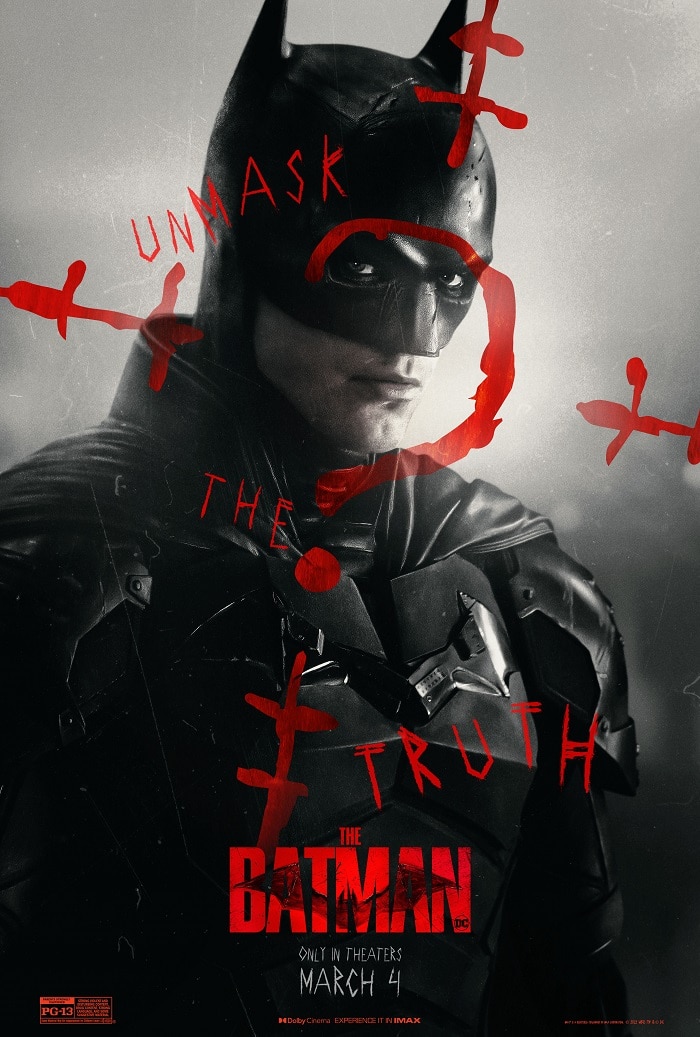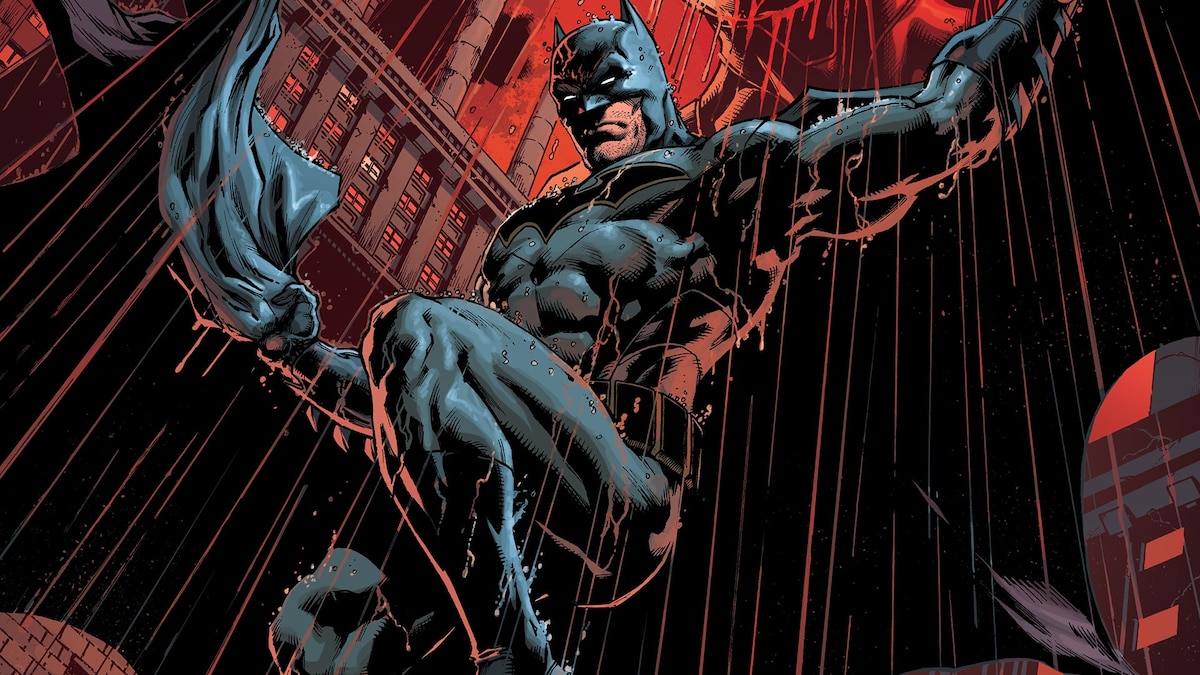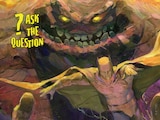As I’ve written before, Batman never kills. That’s pretty much his whole deal. Paradoxically, while Gotham City is the home of the most dangerous urban criminals in all of fiction, the man who stands between them and the dawn is one who steadfastly refuses to ever take a life.
You know…except for the times he does. Such as in his very first appearances in 1939. And the most popular depictions of the character to date in film. So when, if ever, is it okay for Batman to take a life, or allow a life to be lost? How did this rule come to be? And what reasons does he give for his hard rule against lethal punishment?

As we approach the release of The Batman, it’s a question worth examining once more. Past Batman directors Tim Burton, Christopher Nolan and Zack Snyder have all given us their own answers, all of which can be seen as stemming from Batman as written in a different era of his history. The Batman, too, wears its influences proudly. From the first trailer’s debut at DC FanDome 2020, director Matt Reeves has cited Darwyn Cooke’s Batman: Ego as one of the most important works to his film’s depiction of Batman—a story which deals almost entirely with the question of Batman’s lethality.
“There is this rule with Batman,” our newest on-screen Dark Knight, Robert Pattinson, has said of his character. “He must not kill. It can be interpreted in two ways. Either he only wants to inflict the appropriate punishment, or he wants to kill and his self-control prevents him from doing so."
This second idea, of Batman as an addict of violence who must restrain himself or succumb to his darkness, is an intriguing one, and the story at the heart of Ego. But it’s hardly the only reason Batman’s history has provided for his One Big Rule. So, let’s take a closer look.
The Vow

The question of whether or not Batman should kill his enemies was in fact a point of contention between Batman’s own true parents. Not Thomas and Martha Wayne, but creators Bob Kane and Bill Finger.
The first villain Batman ever faced was a man named Stryker. Despite that legacy, there’s a good reason you don’t see him around. In 1939’s Detective Comics #27, Batman punched him over a railing into a vat of acid. His immediate feelings on the matter: “A fitting end for his kind.”
In his first year, the character of Batman was still being defined, and he was pretty intense. He killed his enemies almost as often as not and had little reservation when it came to the use of guns.
“As much as I hate to take a human life,” Batman says from behind the gunner’s seat of his Batplane in 1940’s Batman #1, “I’m afraid this time it’s necessary!”

It was at this point that editor Whitney Ellsworth put his foot down. Children were reading this magazine in the millions, and parents were finding reason for concern. With moral panic against the values depicted in comic books already on the rise in those nascent years, the pressure was on to soften their second-most popular hero’s image.
Bob Kane, as he tells it, was furious. In his personal memoir, Kane wrote years later that he always regretted taking lethal force away from Batman, as it divorced his character from the brasher pulp heroes who inspired him. This laissez-faire attitude towards the death of his enemies and its roots in pulp fiction would find its way to the screen in Tim Burton’s Batman films, fifty years later.
But Bill Finger had other regrets. Namely, that he had ever allowed Batman to kill in the first place. As the friends who knew him well later said, Bill was never comfortable with his hero’s lethality, and was relieved to move away from that in a different direction. As the author of Batman’s legendary origin, Finger made the ultimate statement on why Batman doesn’t kill at the very outset: because his parents were killed right in front of him. Batman would never kill because in the tragedy that crafted Batman himself, Bruce determined that the worst thing anyone could ever do is take a life.
Ego Trip

The late Darwyn Cooke was one of the greatest artists to ever grace the world of comics. His inspiring, elementary style habitually revealed who DC’s characters truly were in their most basic shape, in a way which permanently redefined them. In 2000’s Batman: Ego, Cooke presented a confrontation between Batman and his most persistent enemy—not the Joker, not Ra’s al Ghul, but his own psychological id.
Alone in the Batcave after allowing a man and his family to die over fear of the Joker, Batman must answer to himself why he allows Gotham’s monsters the chance to escape justice again and again and again. The truth he finds is an ugly one: that, in his heart, Batman could easily become as much of a monster himself. The night his parents were killed, a beast was awakened in him. One which, if ever allowed free, would never stop. The only way to keep the killer inside him in check, like a recovering alcoholic refusing a single glass of wine, is to never take a life—not even when it could save countless more. Because if the darkest heart of Batman is unleashed, then who will save Gotham from him?

This interpretation is one of the most creative, to be sure, turning Batman’s very existence into a psychological horror. It’s one that Jason Todd, his murdered son brought back to life, challenges directly in Judd Winick’s Under the Hood. “If I do that,” Batman tries to explain, “If I allow myself to go down into that place… I’ll never come back.”
And suppose Batman did go into that place, and his worst fears of himself were realized? That’s the very thesis Scott Snyder presents in his creation of the Batman Who Laughs, of a Batman finally pushed beyond his rule. In doing so, he literally becomes no different from the villain he killed. When the world’s greatest hero kills, Snyder proposes, what you’re left with at the end of the night is the world’s greatest killer.
The Sensational Character Find

With eighty-three years of stories from hundreds of writers, each with their own perspective on Batman, even the Biggest Rules are bound to be broken. When the undead rise again as bloodthirsty shells of their former selves, does it count as a kill to take them back down? Not in DC vs. Vampires. If an artificial intelligence can think and feel, can it truly be murdered? Perhaps not in “His Silicon Soul,” one of the most haunting episodes of Batman: The Animated Series. Is allowing a man to die, not intervening to save their life, but intentionally consigning them to their fate, a form of murder? Depends how angry you’ve made him, really. In Batman’s career, you can find him at his most jaded at the very beginning, and at the very end. Or, before Robin, and after Robin. It’s no coincidence, after all, that Batman’s staunch policy against killing took shape only after Robin was introduced in the comics.
The start of Batman’s career is often brutal. In Christopher Nolan’s Batman Begins, Batman willfully allows Ra’s al Ghul to be killed by the cable cars representing his parents’ vision for Gotham’s future. And in his twilight years, on occasions where Robin is ruthlessly taken from him—such as Zack Snyder’s Batman v Superman and Frank Miller’s The Dark Knight Returns—we’re left with a weary and vindictive Batman with a light that could only be rekindled by a new dawn of justice.

The common denominator is that when Batman works alone—as he so often, and so falsely, professes that he’s at his best—that’s when we’re left with a Dark Knight at his darkest. It’s for the sake of those he inspires, those he teaches, and those he loves, that Batman resists the pull of the easy, permanent solution.
Batman: Ego may have given us a look into what Batman fears is the true reason he doesn’t kill. But the true reason is that Batman has to set an example. For the future of Gotham to survive him, he has to hold himself accountable for the choices he’d wish the next generation of heroes to make. Bruce Wayne’s feelings on who deserves to die may be complicated, and often are. But for the sake of the Robins, the Batgirls, and the people he’s inspired both in comics and reality to make a stand against evil…Batman does not kill.
It’s pretty much his whole deal.
Alex Jaffe is the author of our monthly "Ask the Question" column and writes about TV, movies, comics and superhero history for DCComics.com. Follow him on Twitter at @AlexJaffe and find him in the DC Community as HubCityQuestion.
NOTE: The views and opinions expressed in this column are solely those of Alex Jaffe and do not necessarily reflect those of DC Entertainment or Warner Bros.















